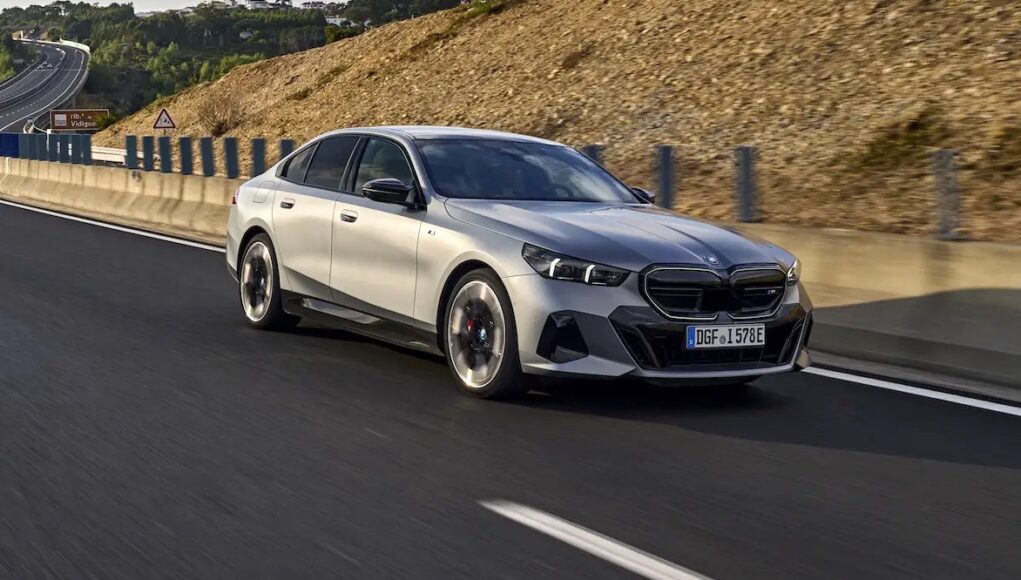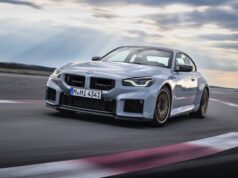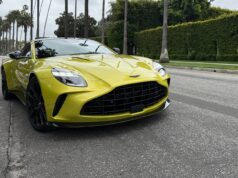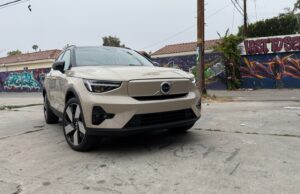BMW’s new 5 Series launches with a fully electric powertrain, bringing serious competition to the midsize luxury EV class.
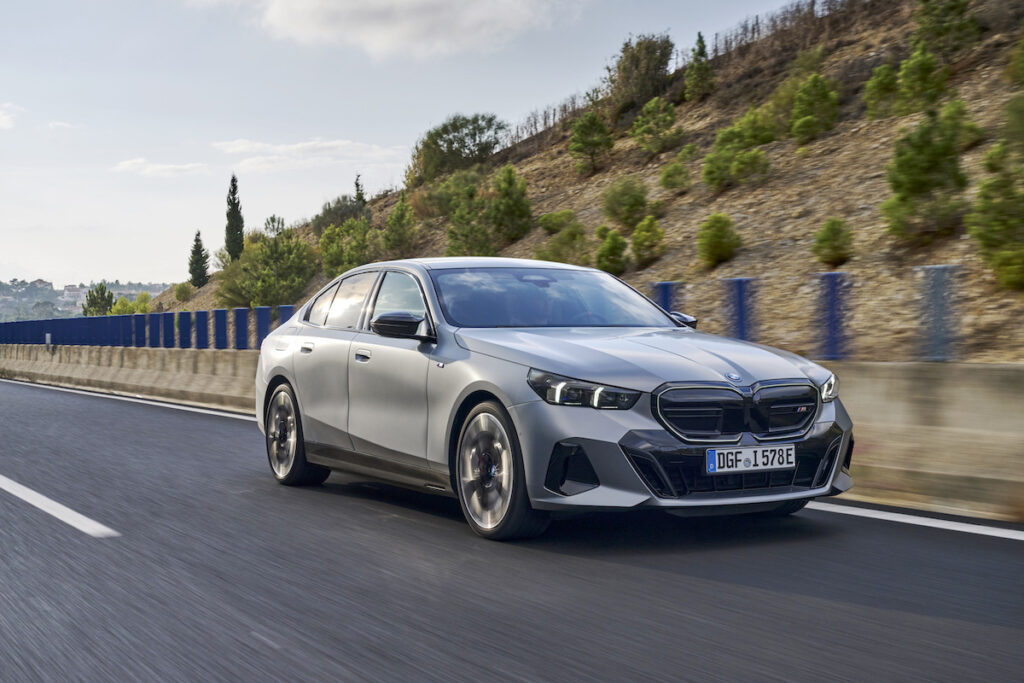
While many carmakers are working hard to develop dedicated platforms for standalone EVs, BMW is taking a slightly more all-encompassing approach. The German automaker is instead building all-in-one architectures that can support internal combustion, plug-in hybrid and fully electric powertrains, the latest of which forms the bones for the eighth-generation 5 Series – and, more importantly, the new i5 EV.
Longer, wider and taller than its predecessor, the 2024 5 Series lineup will go on sale this fall. And while we still have yet to test the gas-powered variants – that’ll happen later this year – the i5 gives us a good idea of what we can expect from the entire model range. After all, aside from the electric drivetrain, the i5 is the same as every other 5 Series, inside and out.
The sedan’s overall styling is certainly more attractive than BMW’s big-schnozzed 7 Series, yet at the same time, the 5 Series isn’t quite the handsome four-door it once was – the epitome of the German “business saloon.” Inside, however, it’s a much different story, where the 5 Series clearly takes many of its design cues from the 7 Series, with great two-tone seating surfaces, backlit panels with different ambient lighting themes and nice attention to detail. What’s not to love about pretty glass controls?
The i5 comes standard with Veganza upholstery – a leather-free, vegan material that feels as soft as high-quality cloth. This textile makes for comfortable and supportive seats that can still be heated and cooled, and you’ll find Veganza on the steering wheel, dashboard, door liners and more. For those of you who don’t find cattle as precious, traditional leather hides are still available, as are a wide range of trim designs, ranging from open-pore wood to interesting-looking metal.
All i5s come standard with a 12.3-inch digital gauge cluster and 14.9-inch multimedia screen housed in one large, curved display. The software within is BMW’s iDrive 8.5 suite – an updated take on iDrive 8.0 that includes a more intuitive home screen, a fixed panel for the most commonly used functions and improved augmented reality overlays for the navigation system. Apple CarPlay and Android Auto connect wirelessly, and there’s a new AirConsole function, too, which lets you scan a QR code and play video games on the center screen when the car is stopped. We suppose this would be a fun thing to do while you’re sitting at a public charger, but you could also just mess around on your phone like usual.
Speaking of public charging, all i5 models can accept a maximum DC fast-charging rate of 205 kilowatts, which actually bests the 195-kW charging in the BMW i7. The i5 has an 81.2-kilowatt-hour lithium-ion battery packaged in a skateboard style between the axles, and it can either power one or two electric motors, depending on the model.
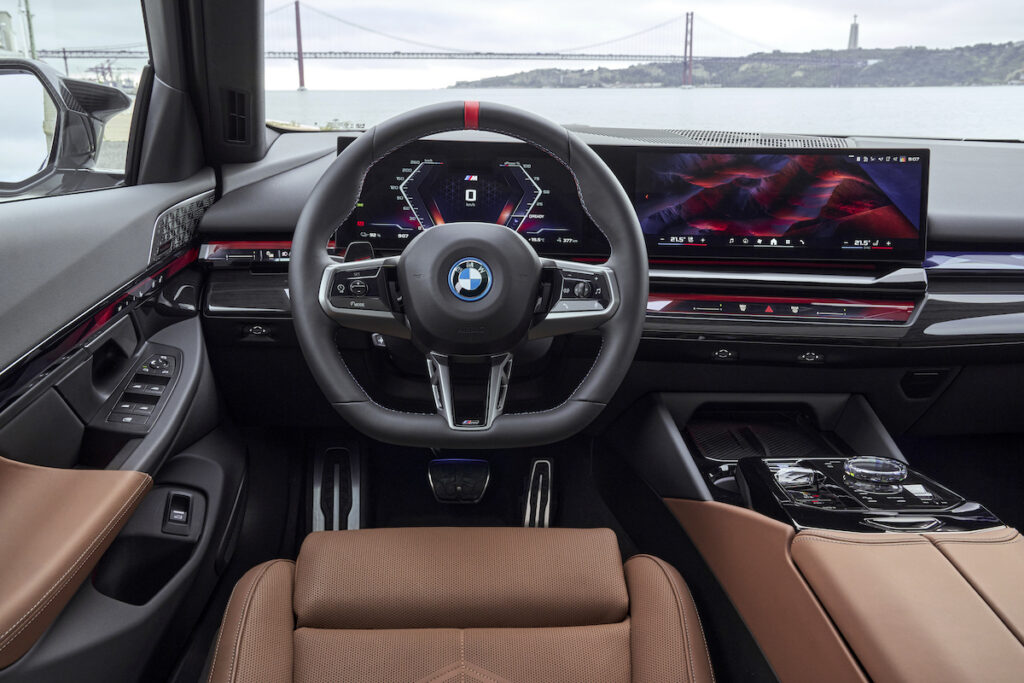
The base i5 eDrive40 has a single-motor, rear-wheel-drive setup with 335 horsepower and 295 pound-feet of torque, as well as an EPA-estimated range of 295 miles. The i5 M60 xDrive, meanwhile, ups the ante with a second electric motor at the front axle, giving this sedan all-wheel drive – not to mention 593 hp and 586 lb-ft of torque. Range does take a hit in the M60, of course; the EPA says you’ll max out at 256 miles.
With either power level, you can spec the i5 with 19-, 20- or 21-inch wheels, though standard features like 48-volt active anti-roll tech and integral active steering are reserved for the M60. Both models have a double-wishbone front and self-leveling rear air suspension, and the i5 eDrive40 is optionally available with electronically adjustable dampers – something that’s standard on the M60.
Driving the i5 M60 on the winding roads outside of Lisbon, Portugal is a lot of fun; this car is eager to turn in and stays beautifully planted while cornering. The 2.5-degree rear-axle steering helps with overall agility, and the thick-rimmed steering wheel feels great in your hands, though it could use a touch more feedback. None of this comes at the expense of long-distance comfort, either; the i5 M40 is perfectly suited to long stints of highway cruising.
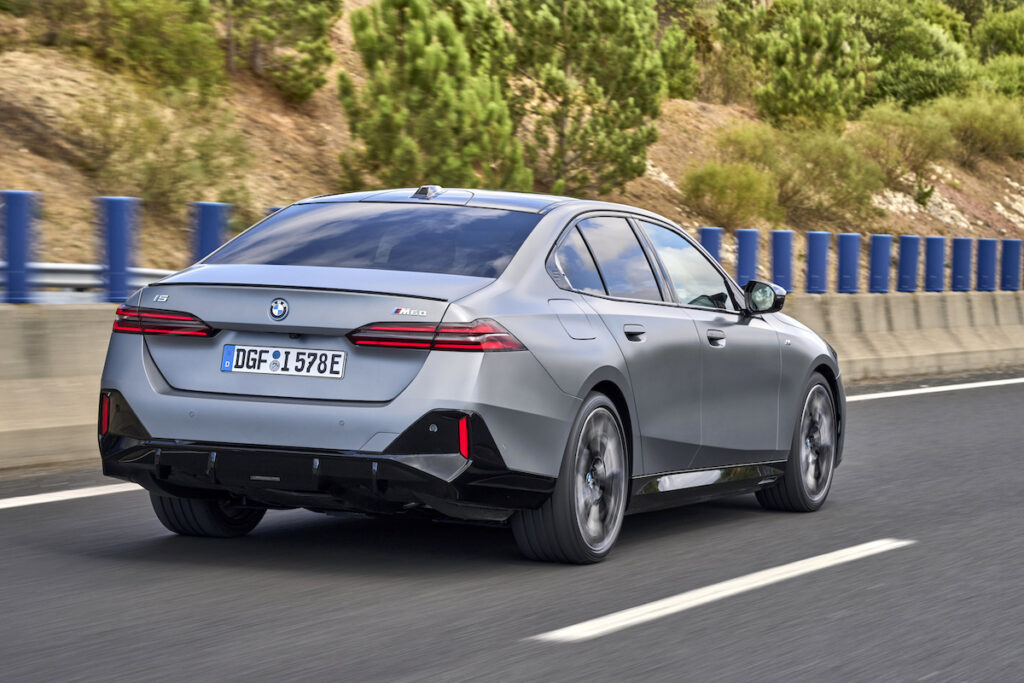
You can even do a lot of that freeway slogging hands free thanks to BMW’s optional Highway Assistant, which will let you take your hands off the wheel for extended periods of time at speeds up to 80 mph. Automatic lane changes are part of this tech now, as well, where you can just glance to the left or right to accept a suggested maneuver. It’s pretty slick.
The single-motor i5 eDrive40 in no way feels like a downgrade from the M60, even if it’s a full 2 seconds slower off the line. Still, instant electric torque means the base i5 is still a hoot to launch – far more so than its 5.7-second 0-to-60-mph acceleration time might suggest.
Plus, the i5 eDrive40 is significantly less expensive than the M60, with the two models starting at $67,795 and $85,095, respectively, including a $995 destination charge. This prices the BMW nicely alongside its primary competitor, the Mercedes-Benz EQE sedan, a car that tries to impress with unique design and a standalone platform. But us? We prefer the better-driving, more straightforward i5.

